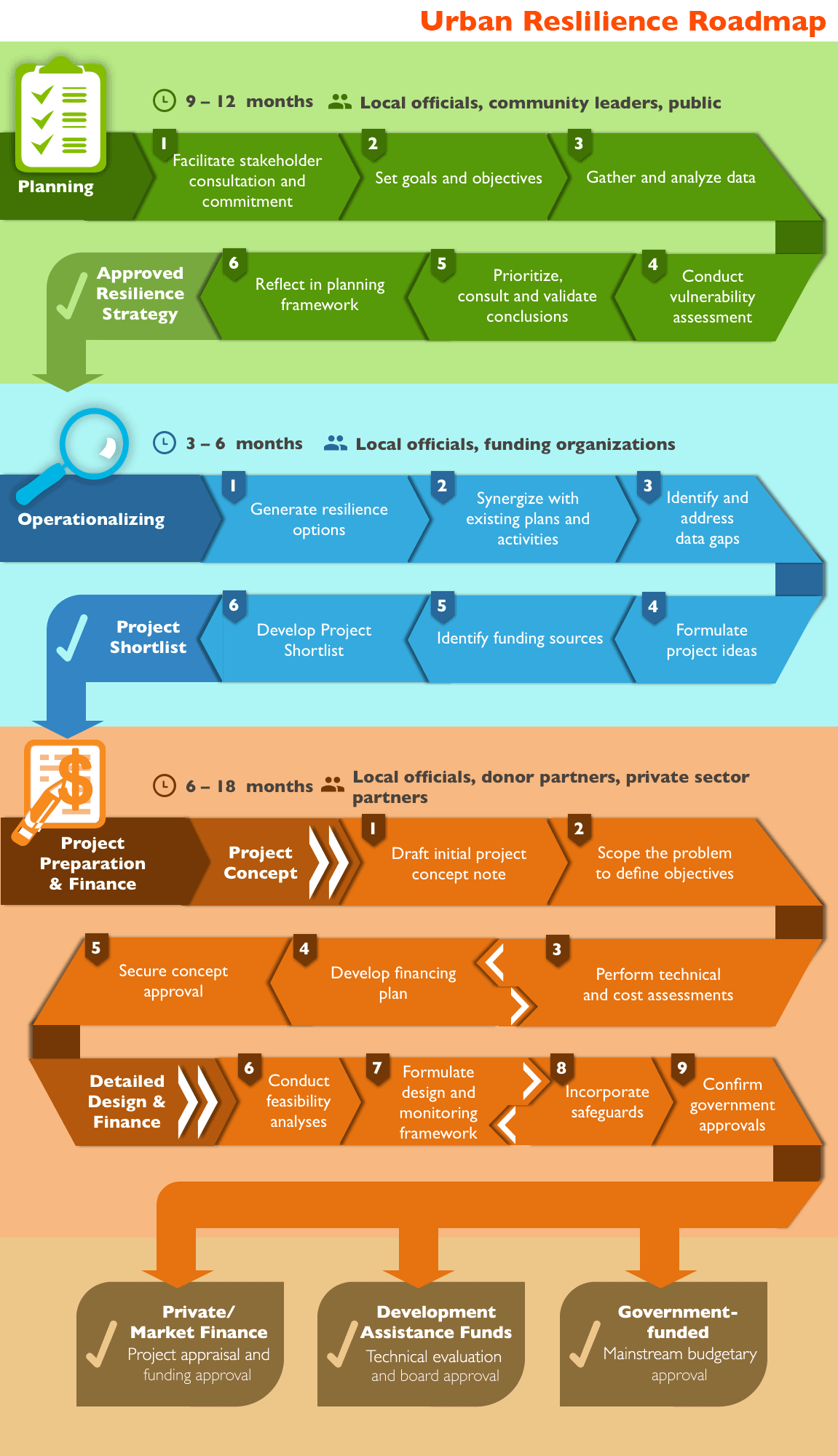 Why this process?
Why this process?
This process map has been developed as a tool to help cities, government agencies, and development partners better navigate a course for building resilience, starting from strategy development and resulting in project implementation. For cities and government agencies, the Resilience Planning and Project Finance Process can serve as a roadmap, helping city stakeholders identify key milestones in the resilience building processes while providing a framework for organizing their efforts. For development partners, the process map can be used to better coordinate efforts by reducing redundancies in programming and focusing resources on the aspects of the process where they have the most expertise. This tool can also help cities better integrate their programs, and can serve as a coordination framework between actors, which can enhance a city’s ability to attract financing for resilience building initiatives.
Building resilience requires integrated long-term planning and a forward-looking mindset. Often there is a conflict between long- and short-term interests. This process map is designed to help reconcile some of these conflicts and contribute to finding a balance by helping to bridge the gap between policy and implementation and also by connecting project design and implementation and contextualizing them in broader, longer-term efforts to enhance resilience.
Why three phases?
Based on the experience of the USAID Adapt Asia-Pacific project, as well as those of our partners, we have recognized that there are three distinct phases involved in a comprehensive approach to developing a resilience and adaptation strategy, and then implementing that strategy through projects and other initiatives.
The first phase, “Planning”, lays the foundation for setting resilience goals and identifying priorities for implementation. Through rigorous data analysis and consultations with stakeholders, cities can navigate this phase to develop their resilience strategies as part of their overall planning frameworks.
The second phase, “Operationalizing”, is a critical phase to move from plans and strategies to projects and implementation. Through this phase cities identify their short and long-term priorities, and develop an initial list of priority resilience actions or project ideas. During this phase cities do a preliminary analysis of financing options for their priority resilience actions.
The third phase, “Project Design”, is the final phase where cities develop projects to implement their priority resilience actions. This phase provides a rigorous framework for cities to prepare project concepts, identify financing sources, develop full project proposals, and obtain final approval from financiers.

